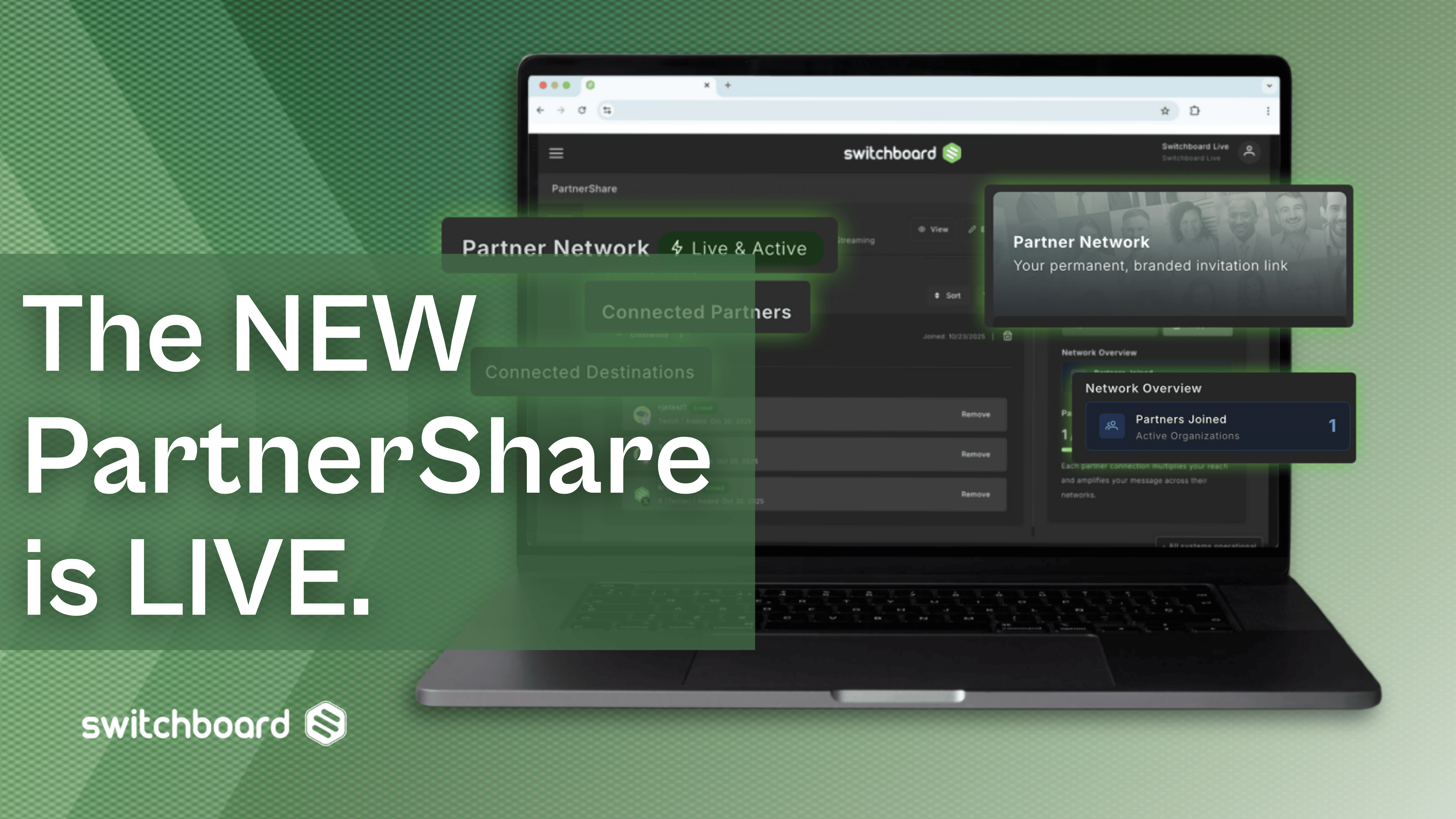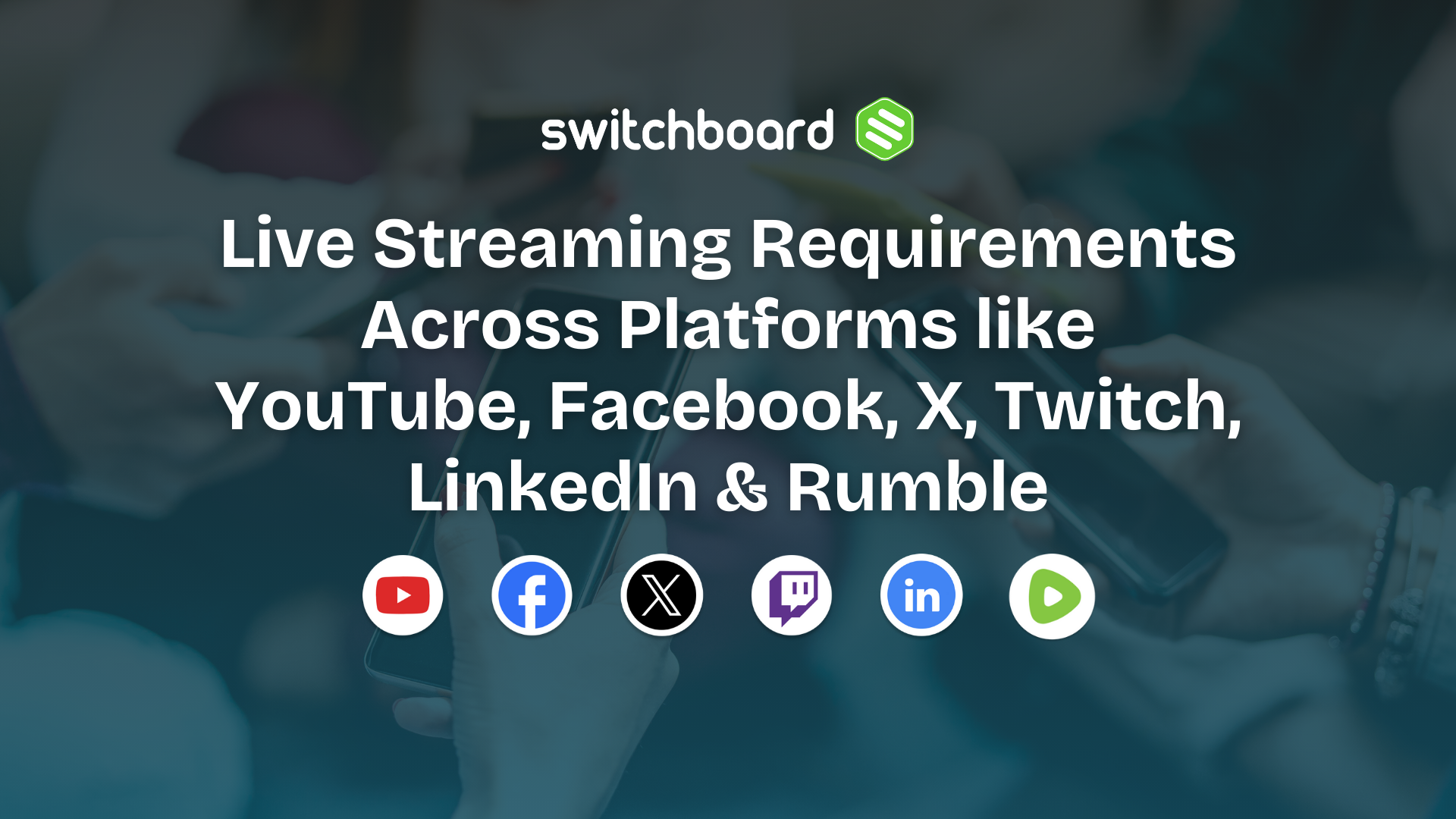All across the world, the coronavirus crisis has changed the way we live, work and engage with one another. As entire offices moved online, they quickly adapted their operations for a new environment.
Few met this challenge with greater speed and success than the Atlantic Council: a nonpartisan organization that explores global problems and multilateral solutions through a geopolitical lens. Among their primary platforms are live events that galvanize collaboration and engagement amongst political and economic leaders.
When the Atlantic Council went fully remote in response to the COVID-19 crisis, their Events and Communications teams were faced with a daunting task: In less than a week, they had to shift a massive calendar of in-person events to a new and entirely virtual format.
However, by implementing Switchboard Live to deliver simulcast streaming to multiple online destinations and pivoting from traditional live-event broadcasting to an agile, fully digital workflow, the teams turned this challenge into an opportunity — tripling the average number of weekly events and doubling their audience size.
“We wouldn’t have been able to reach tens of thousands without Switchboard Live.”
— Graham Lampa, Atlantic Council
Key Takeaways
Within six weeks of implementing the fully remote workflow using Switchboard Live and Zoom Webinar, the Atlantic Council:
- Hosted 50 live events, for a total of 12,395 live participants and nearly 374,000 views.
- Tripled their average number of weekly events: from just under four before the transition to nearly 12 — with as many as five events in one day and 19 in one week (five times their previous average).
- Drew 30% more registered participants in Zoom webinars than the average for in-person events
- Vastly increased their livestream views, using Switchboard Live to expand from a YouTube-focused model to leveraging its communities on Twitter and Facebook. The council went from gaining hundreds of views within 24 hours to now gaining 5,000 views on average in the same time period across YouTube, Periscope, Facebook, and LinkedIn. Higher-level events have drawn up to 20,000.
Creating a virtual production workflow with Switchboard Live and Zoom Webinar
As a leading nonpartisan, nonprofit think tank, the Atlantic Council promotes constructive, collaborative leadership among Atlantic Community allies and partners to address global challenges. They aim to shape and influence policy decisions and promote engagement in international affairs by publishing in-depth research and reports, building communities and providing forums for prominent figures to discuss key issues.
Much of their coverage is currently focused on the COVID-19 crisis and the international community’s response. Interestingly, it was this situation itself that forced the team to shift to a fully remote workflow. Prior to the crisis, most live events were hosted onsite at the Atlantic Council’s headquarters, then broadcast and archived on the Council’s YouTube channel. In this workflow, events were held and filmed in-person within one of four reconfigurable and expandable physical spaces.
Onsite was a full production studio and a mobile A.V. (audio-video) station that could be moved to the proper location for event A.V. management and live-stream production. This station included a desktop encoder and a traditional video switcher to receive incoming feeds from the studio’s multiple robocams. The A.V. team would mix the incoming video and deliver the outgoing broadcast through either Wirecast or OBS (Open Broadcaster Software) as a backup solution.
Many of these events are sponsored by or co-hosted with partner organizations, who were open to simulcasting the Council’s stream to their own platforms. TV monitoring and clipping platform Snapstream provided a temporary fix, but when re-streaming from this platform, bandwidth constraints limited its long-term reliability. The Communications team had already begun exploring other options for multicast streaming, and discovered Switchboard Live — as it turned out, not a moment too soon.
“Switchboard Live gives us the ability to amplify our content beyond our own networks and followers to include our partner institutions and speaker networks, helping us spread the message that we have to work together to see our way through this crisis.”
— Graham Lampa, Atlantic Council
On March 16, the Atlantic Council transitioned to a fully remote workforce, and dozens of live events with high-profile panelists had to quickly (and securely) become virtual ones. Luckily, Switchboard Live was already engaged, and the teams made a plan to pivot to an online workflow that participants could access from anywhere.
In the past, event panelists who couldn’t physically attend would tune in via Zoom, the popular video conferencing platform, which the A.V. team added in using the video switcher. Now they needed an easy way to incorporate multiple incoming video sources from all panelists and participants, not just a few.
When testing Switchboard Cloud Live, the Communications team found that it could integrate the platform with Zoom Webinar — allowing them to selectively receive incoming video from hundreds of participants. Zoom Webinar offers greater control over the outgoing feed than the consumer version, as well as enhanced security; only those who have registered ahead of time can receive a link to sign in. This was a crucial feature for the Atlantic Council, whose panelists include such leaders as European foreign ministers and defense officials discussing sensitive issues.
In the current remote workflow, all participants, including hosts, panelists or viewers, sign up through the event registration page on the Atlantic Council’s website. The webinar host manages the outgoing feed to provide an optimal viewing experience for both the in-Zoom audience and those watching via live stream, controlling whether the speaker view or the gallery view is shown.
Using video- and audio-capturing hardware and software, the outgoing stream is then sent from Zoom Webinar to the Wirecast platform, where the A.V. team crops out the on-screen controls and hides the video feeds of everyone but the hosts and panelists. The final, produced video is then streamed via RTMP to a workflow in Switchboard Live, where the Communications team selects the outgoing destinations for the live broadcast: Snapstream, YouTube, Periscope, Facebook and LinkedIn. Then they simply hit “Go Live,” and the live event stream is simulcast to every one of these.




.png)
.png)
.png)





